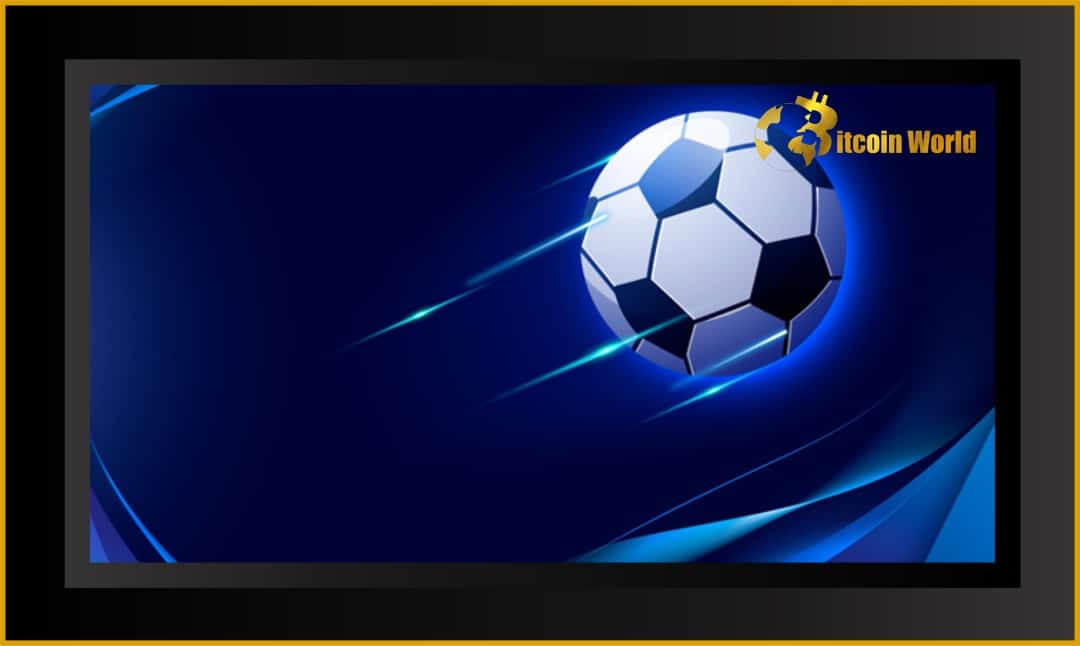Are you tired of in-game assets vanishing the moment you stop playing? What if you could truly own your digital game items, trade them, and even earn from them? That’s the vision driving Swedish startup GOALS, and they’ve just landed a whopping $15 million seed investment to make it a reality! Backed by venture capital firm Northzone, GOALS is diving headfirst into the exciting world of play-to-own blockchain gaming, aiming to redefine how we interact with online multiplayer experiences.
Imagine a game where your players, clubs, and even cosmetic skins are not just locked within the game’s ecosystem. GOALS is building a game where these assets are represented as Non-Fungible Tokens (NFTs) on a blockchain. Think of it like owning a unique digital collectible, secured and verifiable on a decentralized network. This groundbreaking approach draws inspiration from platforms like Sorare, which has already shown the potential of NFTs in fantasy sports.
Andreas Thorstensson, a partner at EQT Ventures and founder of e-sports group SK Gaming, perfectly encapsulates the problem GOALS is tackling: “With traditional games, you only own skins temporarily. You can’t trade them, you lack control, and transparency is non-existent. Blockchain offers the perfect solution to these issues.”
Here’s a breakdown of what makes GOALS and play-to-own gaming so compelling:
- True Ownership: Finally, own your in-game assets! NFTs give you verifiable ownership, unlike traditional in-game purchases.
- Trade and Earn: Want to sell a rare player or a sought-after skin? With NFTs, you can trade them on marketplaces and potentially earn real value.
- Transparency and Control: Blockchain technology ensures transparency and gives players more control over their digital assets.
- Free-to-Play Access: GOALS is designed to be free-to-play, making it accessible to a wide audience. Revenue will be generated through a small percentage of NFT marketplace sales and optional add-ons that don’t require asset selling.
| Feature | Traditional Gaming | GOALS – Play-to-Own Gaming |
|---|---|---|
| Asset Ownership | Limited, game-dependent | Full, verifiable NFT ownership |
| Trading Assets | Generally restricted | Freely tradable on marketplaces |
| Transparency | Limited | High, due to blockchain |
| Control | Game developers | Players have more control over their assets |
Selecting a Chain: The Blockchain Dilemma
Choosing the right blockchain is crucial for any NFT-based game. GOALS has been diligently researching this for the past four months, exploring various options. Currently, proof-of-stake networks like Polygon, Starkware, and Solana are frontrunners. Why proof-of-stake?
- Scalability: These networks are designed to handle a large volume of transactions, essential for a game with potentially thousands of players and NFT transactions.
- Cost-Effectiveness: Proof-of-stake networks generally offer lower transaction fees (gas fees) compared to older blockchains like Ethereum, making it more affordable for players to interact with NFTs.
- Lower Emissions: Environmentally conscious gaming is becoming increasingly important. Proof-of-stake is significantly more energy-efficient than proof-of-work blockchains, aligning with sustainability goals.
Consider the scale: each GOALS user will have fifteen players, each minted as an NFT. With a large player base, this translates to a massive number of NFTs. Thorstensson emphasizes that the chosen blockchain must be both cost-effective and environmentally friendly to support this scale.
While they are exploring options like Polygon, Starkware, and Solana, GOALS hasn’t dismissed the idea of creating an Ethereum sidechain, similar to Ronin, which powers the popular Axie Infinity game. However, recent events have highlighted the security challenges of this approach.
Remember the $600 million exploit that targeted the Ronin bridge, connecting Ethereum to its sidechain? This incident serves as a stark reminder of the vulnerabilities in blockchain bridges.
“Bridges are inherently a security risk,” Thorstensson acknowledges. He believes this attack will drive more focus on strengthening bridge security. For GOALS, the priority is ensuring decentralization and robust security. “We need to ensure the chain is highly decentralized with enough nodes and validators to guarantee majority control from a security standpoint.”
The Ultimate Goal: Gaming for Everyone
GOALS isn’t just targeting crypto enthusiasts. Thorstensson explicitly states his ambition to reach players who are not yet familiar with the crypto world. This is a key differentiator in their funding strategy.
Instead of solely seeking investment from specialized crypto funds, GOALS opted for generalist equity-based funds with a strong interest in Web3 technologies. Thorstensson believes this approach is better suited for companies like GOALS, aiming for broader mainstream adoption rather than solely focusing on the crypto-native community.
With the new funding secured, GOALS is aggressively expanding its team. They plan to hire an additional 30 game developers to accelerate development, targeting a public release by the end of 2022. This ambitious timeline signals their commitment to bringing their play-to-own vision to gamers worldwide.
In Summary: GOALS is poised to be a game-changer in the gaming industry. By embracing blockchain and NFTs, they are empowering players with true ownership of their in-game assets and creating a more engaging and potentially rewarding gaming experience. As they navigate the complexities of blockchain technology and game development, GOALS’ journey is one to watch closely for anyone interested in the future of gaming and the metaverse.
Related Posts – XRP Price Goes Up After Unexpected Reappearance On Coinbase
Disclaimer: The information provided is not trading advice, Bitcoinworld.co.in holds no liability for any investments made based on the information provided on this page. We strongly recommend independent research and/or consultation with a qualified professional before making any investment decisions.


